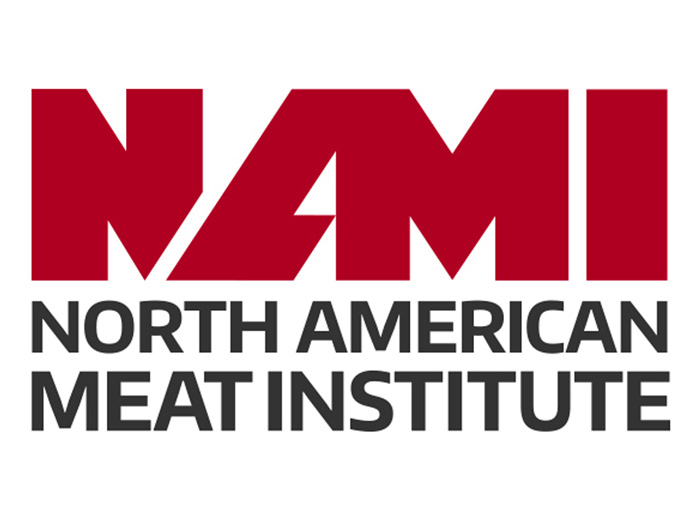Meat Institute to President Trump: US/China Phase One Agreement Vital to US Agriculture; China Must Meet Phase One Obligations
June 16, 2020 | 5 min to read

WASHINGTON, DC – The North American Meat Institute (Meat Institute) today joined a broad coalition of agribusinesses and agriculture organizations calling on President Trump to ensure continued implementation of the U.S. China Phase One Trade Agreement due to the significance of China’s market for U.S. food and agricultural exports, particularly U.S. meat and poultry products, which now enjoy expanded market access under the Agreement. The organizations emphasize the Agreement’s benefits for the U.S. rural economy, and underscore its importance to the overall growth and vitality of the U.S. agriculture sector.
The letter, sent June 16, 2020, was signed by 192 groups representing all parts of the food value chain and rural economies. The following is the text of the letter:
President Donald J. Trump
The White House
1600 Pennsylvania Avenue
Washington, D.C. 20500
Dear Mr. President:
We write to thank you for vigorously advocating on behalf of U.S. farmers, ranchers, food industry workers, and the entire U.S. food and agriculture manufacturing and marketing sector. We appreciate everything you have done to negotiate and advance the timely implementation of the U.S.-China Phase One Trade Agreement. Under your strong leadership, along with that of U.S. Trade Representative Ambassador Robert Lighthizer, the Phase One Trade Agreement represents historic outcomes that address many of the technical barriers to trade that impeded American agriculture’s fullest suite of opportunities in China – and commits China to significant purchases of American agricultural products.
As you know, the U.S.-China Phase One Trade Agreement is critical to both the near- and longer-term success and growth of American agriculture—and the millions of American jobs the agricultural sector sustains. While the current pace of U.S. agricultural exports to China is below the pace needed to meet the Phase One goals, American farmers, ranchers, and rural communities remain optimistic that the purchases under this agreement will accelerate and be fulfilled by China, and that as a result, the American agriculture sector will enjoy important market opportunities. This is especially important considering that U.S. net farm cash income in 2020 is projected to decline 9 percent or $11 billion from the prior year. In inflation adjusted dollars, U.S. net farm cash income is down nearly 30 percent from the recent high in 2012.
We recognize that the U.S.-China bilateral relationship is complex and multifaceted, and that there are many factors to consider as the United States crafts its foreign policy towards China. We appreciate your initiative to complete and preserve this historic trade agreement with China in the face of uncertainty in maintaining international trade flows as a result of the devastating impact of the COVID-19 virus on the world’s economies.
The massive, critical, and diverse U.S. food and agricultural industry supports more than 22 million jobs – including more manufacturing jobs than any other U.S. manufacturing sector – and accounts for 20 percent of the U.S. economy. Our industry is the economic backbone of rural America, stimulating employment throughout the United States. The Feeding the Economy food and agriculture industries economic study provides additional important details on American agriculture’s positive impacts on the U.S. economy.
China represents unprecedented export opportunities for America’s farmers, ranchers, food industry workers, food processors, manufacturers and exporters. These export opportunities provide a mechanism to increase employment in our industries, and to bolster further economic activity throughout the supply chain—including through manufacturing, packaging, warehousing, transportation, logistics, and sustaining our vital port networks. U.S. agricultural exports to China in 2019 surpassed $13.8 billion, supporting more than 2.3 million jobs in the U.S. agricultural sector. China was the number three market for U.S. agricultural commodities in 2019, behind only Canada and Mexico, and has emerged as the world’s second largest economy with a rapidly growing middle class that will continue to increase its levels of disposable income and desire for improved diets.
Implementation of the Agreement with China comes at very opportune time. With China’s domestic production constraints and increasing demand from its consumers for high-quality and safe food and agricultural products, the resulting import demand continues to offer significant opportunities for U.S. agricultural exporters. Today, the world grain and oilseed market is experiencing the greatest oversupply of production since the 1980s, and the United States is facing increasing competition from foreign sources. The U.S.-China Phase One Trade Agreement will act as foundation for prosperity of the U.S. agriculture sector. At this especially challenging time, rural America needs one of its greatest potential export markets for food and agricultural products. A summary of some of the very positive impacts and opportunities resulting from the Phase One Trade Agreement with China is attached.
We reiterate our great appreciation for you and your Administration’s efforts to carry out the Phase One Trade Agreement with China to advance America’s agricultural economic interests by opening new export opportunities and by tackling non-tariff concerns our industries have identified. The Phase One Trade Agreement with China is vital to economic stability and growth for America’s farmers, food manufacturers, food industry workers, agribusinesses—as well as the full spectrum of other non-agricultural sectors of the U.S. economy whose jobs and economic well-being are dependent upon agriculture.
You have our full support and appreciation as you and your outstanding trade team work to ensure that China meets its commitments under Phase One now and into the future.
For the full list of signatures go here.
The North American Meat Institute is the leading voice for the meat and poultry industry. The Meat Institute’s members process the vast majority of U.S. beef, pork, lamb, and poultry, as well as manufacture the equipment and ingredients needed to produce the safest and highest quality meat and poultry products.
